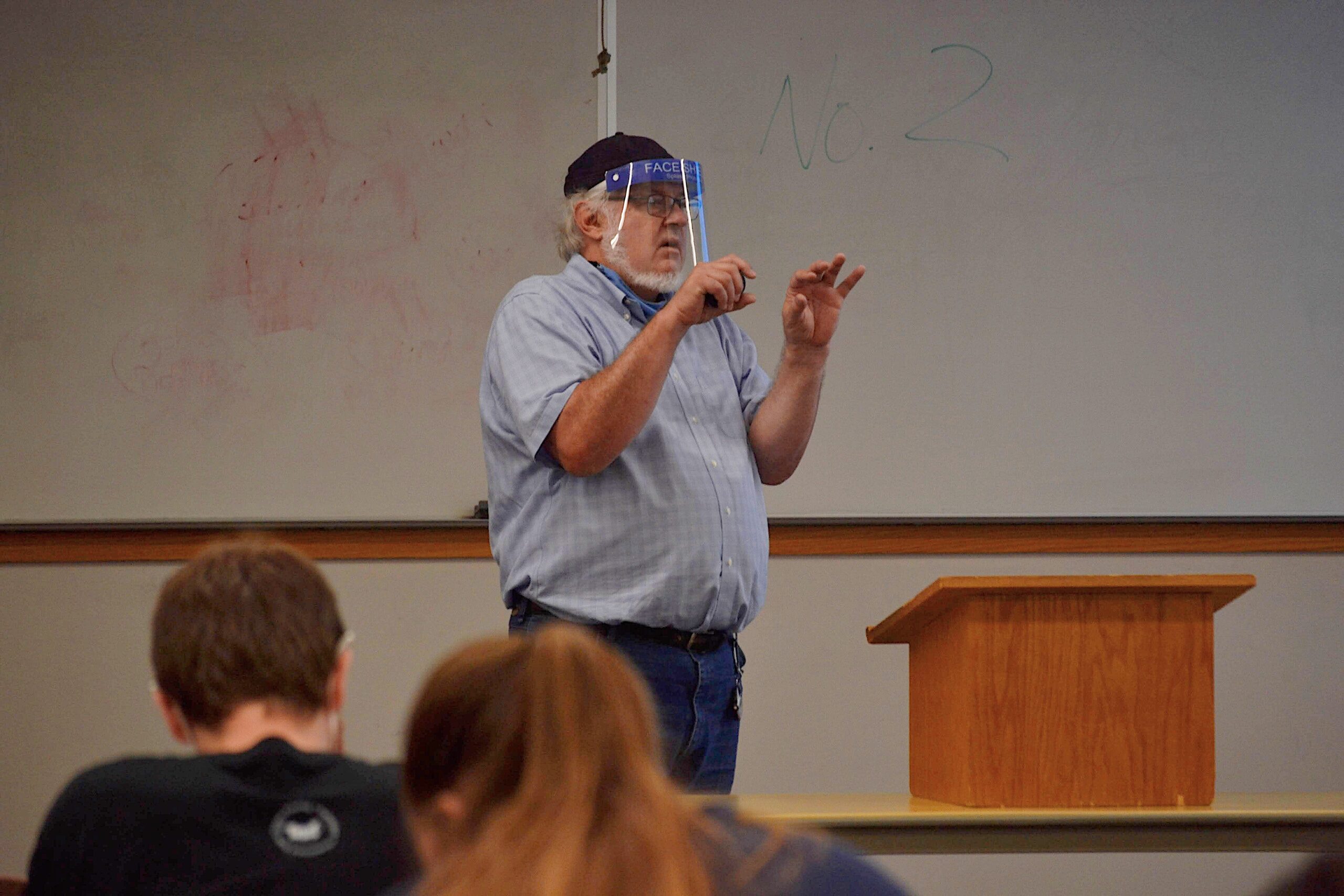As classes resumed at Goshen College last week, students and faculty alike have had to adjust their classroom methods both online and in person. Alysha Liljeqvist, assistant professor of business, and Carl Skip Barnett, adjunct professor in the English department, sat down for an interview about just how much their teaching has changed in COVID-19.
How many classes do you teach, and how many of those have moved entirely to an online format?Alysha Liljeqvist: This semester I’m teaching three classes, two of which are utilizing a hybrid format and one that has moved completely online.
Carl Skip Barnett: I am teaching two classes this semester, and at this point we haven’t been “Notre Damerized,” so nothing I teach is completely online. I’m teaching two hybrid classes with some classes face to face and some on Zoom. Of course being online is safer or healthier during the virus but I think people need to be humanly-physically present with each other if you can do it in a healthy way.
What was the most difficult part of the transition to these more hybrid formats?
A: I have remote learners in both of my hybrid classes. I’ll give you a great example: This morning Zoom was glitchy all across the country, and I didn’t know that going into my class in the morning. So for me that difficulty comes from the process of always having to check the technology, and to get it up and running for class, only to then discover halfway through that it wasn’t working how you thought it was.
C: Well all of us who teach had that experience with it last spring, but back then I was recording my presentations. For whatever reason at the time I thought that recording my presentations was better. Of course I realized you don’t get the same interaction that way, so the most challenging part for me is when students have to take the class remotely. It’s not the Zoom itself. I can do Zoom pretty well in my opinion on PC, but going back and forth between computers and in person class—I’m never sure if someone is getting lost.
Have you been asked, or have you already prepared a plan in the event all classes need to move online for the semester?
A: I would say that the business department has been very forward looking. We spent a lot of time this summer talking through that scenario and building agility into all of our courses so that way we wouldn’t be scrambling if we ran into that situation where we suddenly have to convert all of our classes into online.
C: I don’t think they have asked us to prepare a plan. If that happens, if we have to go all online, I’ll tell you what I wouldn’t do: I wouldn’t go back to recording presentations. To go to all Zoom, I think that would be the plan.
How have masks or face shields changed the way you personally behave in the classroom?
A: I have a face shield, and I definitely like it, although we did just get an email from the Dean reminding us that the face shield comes with all these caveats on how we are allowed to use it. So I am in the process of modifying my classroom to make sure that I am able to use the face shield while at the same time giving the students an idea of my own dynamic style of teaching. I don’t like to sit in front of the classroom; I like to walk up and down the rows and if that’s the way I want to teach then I need to make sure I am keeping students safe while doing it.
C: Well I want to say I am very pleased and proud of all the students I’ve seen at GC so far wearing masks and especially covering their nose. Everyone is taking it seriously. Putting on masks for class and even when walking around campus. Nobody likes doing it. It’s a pain at times but anything beats being laid up in the hospital with this disease. So I’m very pleased with the students and administration for taking it seriously. I like the shields though, my glasses don’t fog up!
Have you noticed a difference in how students interact or behave in the classroom due to masks?
A: In terms of the students and the mask I think that there is going to be a participation learning curve. Feeling like the mask is not a barrier to interacting or engaging and I don’t think that is something that is going to happen overnight.
C: Between students sitting far apart and the muffle of the masks, I just wish I could hear students better. I have one class with 27 people, and some people would probably be considered quiet on a good day. In a number of ways (wearing masks), it cuts into how people communicate with each other—especially not being able to see faces. Maybe we all need a deck of cards with emoji’s on them, so we can hold up a card with a little smiley face or whatever on it. Like texting.
These interviews have been condensed and edited.



